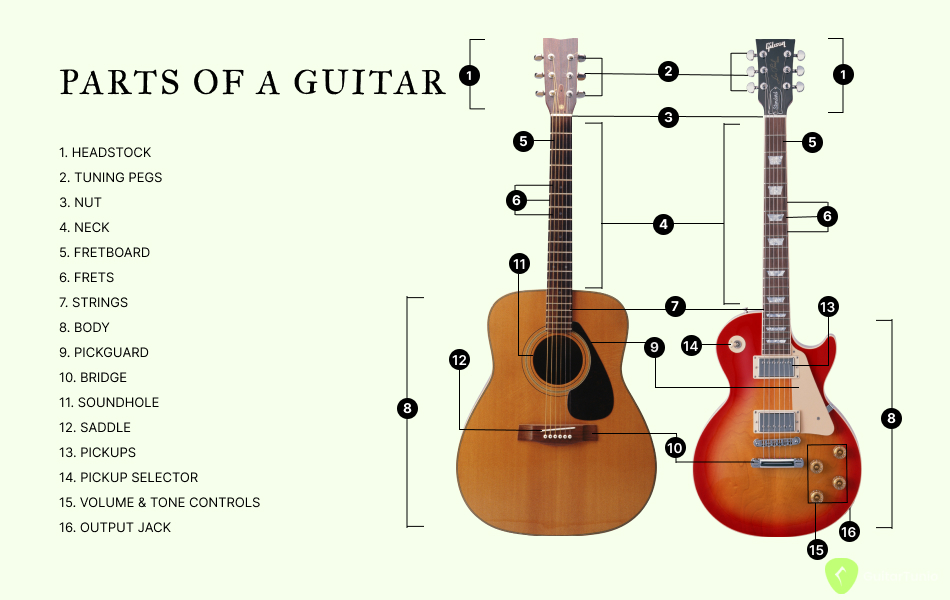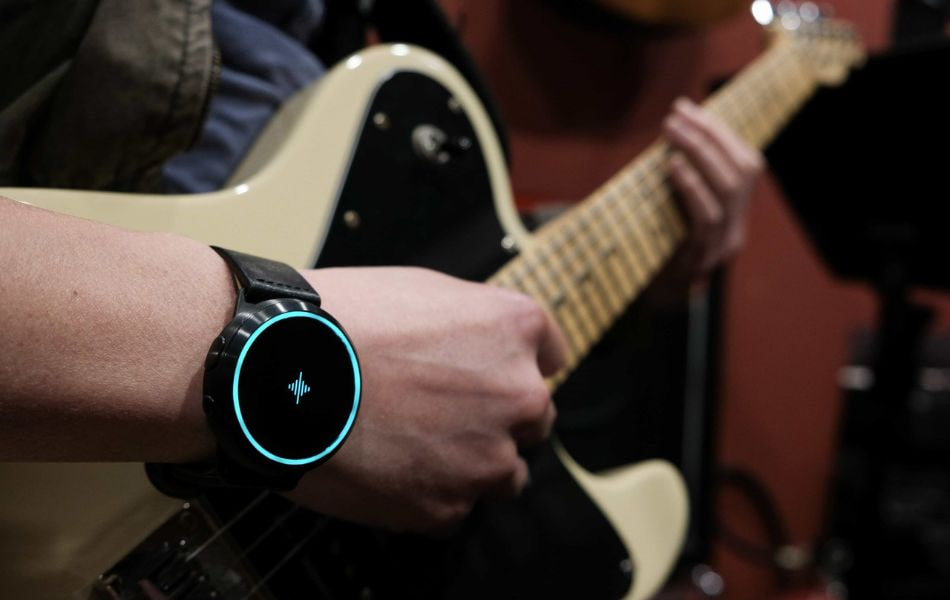Parts of a Guitar
Guitars are musical instruments that have been around for centuries, and they come in many different shapes, sizes, and styles. Whether you're a beginner or an experienced player, it's important to understand the different parts of a guitar and how they all work together to produce sound. In this article, we'll take a closer look at the various parts of both acoustic and electric guitars.
Parts of a guitar

A guitar has several parts including:
- Headstock: The top part of the neck where the tuning pegs are located.
- Tuning pegs: Mechanisms that are used to tighten or loosen the strings to change their pitch.
- Nut: It is a small piece located at the headstock end of the fretboard that helps guide the strings over the frets and onto the tuning pegs. It keeps the strings spaced properly and affects playability and sound.
- Neck: The long piece of wood that runs along the top of the body and holds the fretboard.
- Fretboard: The flat piece of wood on the top of the neck where the frets are located.
- Frets: Thin metal strips along the fretboard that divide it into sections and are used to play different notes.
- Strings: Six thin metal or nylon strings that are stretched over the guitar body and run along the fretboard.
- Body: The main part of the guitar where the sound is produced.
- Bridge: The piece of wood or metal that holds the strings in place and transfers their vibrations to the body of the guitar.
- Pickguard: The pickguard is a piece attached to the face of a guitar to protect the finish from damage from the player's picking hand.
In addition to the parts mentioned above, acoustic and electric guitars include some other parts.
Acoustic guitar
- Soundhole: An opening in the body that allows sound to escape and be heard.
- Saddle: A small strip of material (usually bone or plastic) that transfers string vibrations to the bridge.
Electric guitar
- Pickups: Magnetic or piezoelectric devices that convert the vibrations of the strings into an electrical signal.
- Pickup selector: A switch that allows the player to choose between different pickups or combinations of pickups.
- Volume and tone controls: Knobs that adjust the volume and tone of the sound produced by the pickups.
- Output jack: A socket where the cable from the guitar can be plugged into an amplifier.
In conclusion, the parts of a guitar play a crucial role in producing sound and determining the overall sound and feel of the instrument. Whether you play an acoustic or electric one, it's important to understand the different parts and how they all work together to create music.
Download Guitar Tunio to tune up your dear stringed instruments, practice your timing and rhythm, and learn ukulele and guitar chords. It is free and available on both the App Store and Google Play, get it out now. And don’t forget to visit our blog to see more amazing articles as well as update the latest news.








